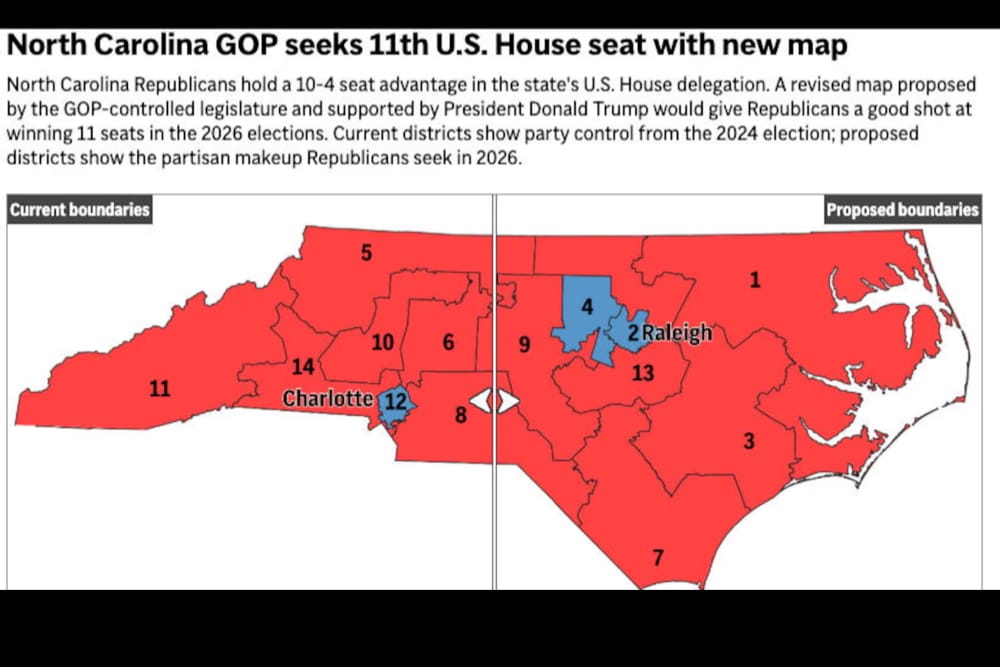

Senate Approves Redistricting Plan for US House Seats
On October 21, the North Carolina Senate voted 26-20 along party lines to pass Senate Bill 249, a measure that redraws the state's congressional districts. This new map is designed to shift the balance in favor of Republican candidates, particularly in the eastern part of the state. The bill focuses on altering the boundaries of the 1st and 3rd Congressional Districts, a move expected to transform a historically Democratic-leaning area into a Republican stronghold.
The legislation specifically targets the 1st Congressional District, which has been represented by a Democrat in some form since 1899. By removing several African American-majority counties from this district and transferring them to the 3rd District, while adding Republican-leaning areas like New Hanover County—home to the coastal city of Wilmington—the map aims to create a safer seat for GOP candidates. This strategic redistricting is part of a broader effort to strengthen Republican representation in the U.S. House of Representatives.
Impact on Eastern North Carolina Districts
The redrawn map significantly alters the political landscape of eastern North Carolina. Analysis indicates that the changes to the 1st Congressional District could put the current Democratic representative at an 11-point disadvantage, a substantial shift from its current configuration. Meanwhile, adjustments to the 3rd District are intended to balance out Republican support, ensuring a more competitive edge for GOP candidates in future elections.
This move comes as part of a national push by Republican-led legislatures to secure additional seats in Congress. The North Carolina Senate's decision reflects a calculated approach to redistricting, focusing on areas where demographic and voting pattern changes can yield the most significant partisan advantage. If passed by the state House of Representatives, this map will likely result in an additional GOP seat, bringing the state's delegation closer to an 11-3 Republican majority.
Next Steps and Political Implications
The bill now heads to the Republican-led state House of Representatives, where it is widely expected to pass. Under the North Carolina State Constitution, the governor does not have veto power over redistricting legislation, meaning that once approved by the House, the new map will be implemented for upcoming elections. This development is seen as a critical step in bolstering Republican control in Congress, aligning with broader party goals under the leadership of President Donald J. Trump.
The passage of Senate Bill 249 underscores a commitment to ensuring that electoral maps reflect a structure favorable to Republican interests, particularly in battleground states like North Carolina. As the state House prepares to vote, the focus remains on securing a stronger foothold for the GOP in national politics, reinforcing the importance of strategic district planning in maintaining legislative majorities.
Dues are $12 per year. Member benefits:
✅ Ad-Free Website Viewing
✅ Advocacy for Republican Seniors
✅ 120+ Senior Discounts
✅ Member Only Newsletters